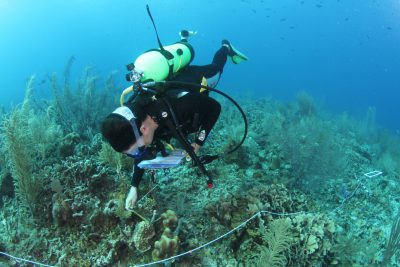One of the core tenets of coral reef conservation is challenged by a new assessment of long-term observational data from the Mesoamerican Reef.
Coral reefs worldwide support high tropical marine biodiversity, but face a barrage of threats, including rising ocean temperatures and acidity, decreases in water quality, and overgrowth by seaweeds. Seaweeds on coral reefs are typically thought to be held in check by herbivorous fish and sea urchins. When they become too abundant, they block the sunlight needed by the photosynthetic organisms living in and feeding coral tissue. The increasing tendency of seaweeds to overgrow coral reefs is believed to be the result of overfishing and disease for these groups. A key conservation action, then, was to reduce the harvest of herbivorous fish, in part by creating marine protected areas (MPAs) and no-take zones (NTZs). More fish, less seaweed, more coral, or so goes the rule.

However, a recent paper (31 May 2016) in PeerJ (link) explored reef changes over 9 years, 4 countries, and 85 sites, and found that, counter to this logic, both seaweeds and herbivorous fish have increased over that time period. This suggests that perhaps the fish are not controlling the seaweed, but rather the seaweeds are feeding larger fish populations. The success of seaweeds appears to be driven by other factors, possibly high nutrient levels due to anthropogenic inputs. Notably, the increase in seaweeds doesn’t seem to be causing a decline in hard corals, which increased moderately from 12% – 15% cover at study sites over the same period.
JRS seeks to link biodiversity informatics to conservation action with the goal of influencing conservation and economic development decision-making. The data for this analysis were provided by the Healthy Reefs Initiative, a project supported on several occasions by JRS (see grant pages in 2012, and 2014), underscoring the value of large scale, long term datasets to informing conservation. The findings argue that protecting Mesoamerican coral reefs from overgrowth by seaweeds will require more than just fish protection, and should also aim to mitigate other stressors.
Read the full paper here.

